
© Christopher Duggan. (Click image for larger version)
Camille A. Brown & Dancers
ink
★★★★✰
New York, Joyce Theater
10 February 2019
www.camilleabrown.org
www.joyce.org
Play Without Words
The choreographer Camille A. Brown has a rare talent – the ability to make you understand a situation or state of mind through dance. And it’s not easy; how many choreographers try to telescope stories or relay messages and either leave you scratching your head or resort to a vocabulary so obvious and didactic it feels like a lecture? Brown triumphs where others fail; she has found that sweet spot, the place where meaning and movement meet. And she does it with humor and warmth.
Her latest piece, ink, is finishing up a run at the Joyce Theater. It is the closing installment in a trilogy about black life in America that began with Mr. TOL E. RAncE (2012) and continued with BLACK GIRL: Linguistic Play (2015). Brown, who has worked in musicals and theatre, has created a show that feels like a series of scenes from the life of people she knows or has known: lovers, friends, people with complicated lives and fears but also bursting with life, playfulness, and joy. All the dancers in the show are African American, as are all but one of the musicians onstage. There is a strong sense that the performers are relating stories they know well.
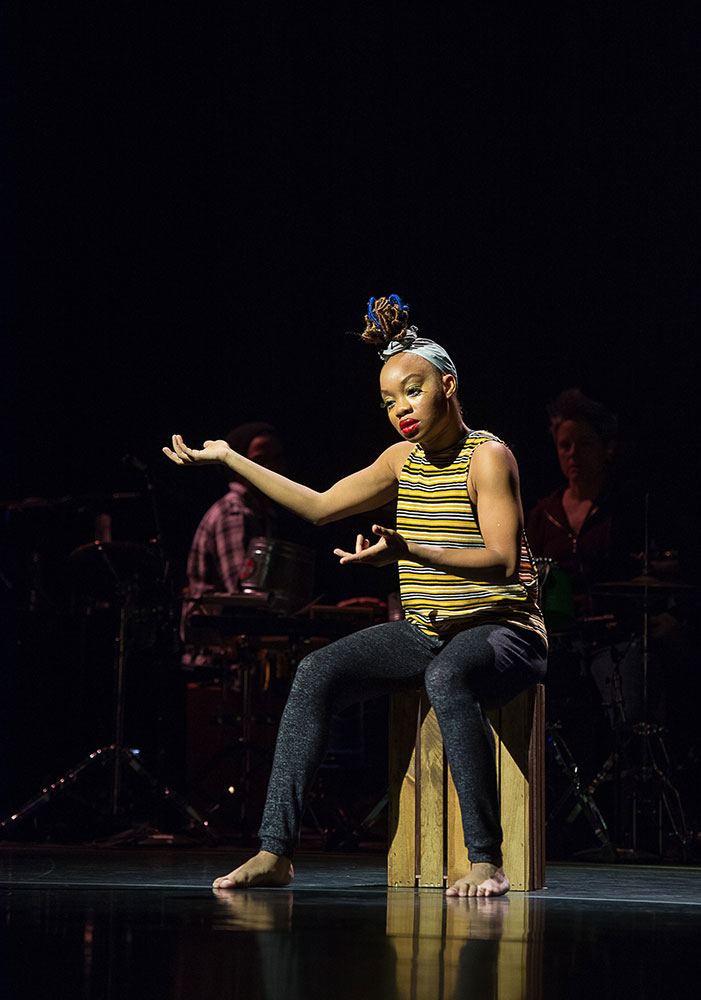
© Christopher Duggan. (Click image for larger version)
As the show begins, Brown sits on a box, her arms and hands fluttering to the rhythms of one of the three percussionists onstage. The relationship of musician to dancer here is as close as at a flamenco concert; the two seem to breathe together and almost read each others minds. Throughout the show, this rapport between musicians and dancers plays a strong role. The piano sets the moods; the percussion determines the tempo and architecture of the dance. A violinist becomes almost an additional character in the drama onstage. Two murals, at an angle to the audience, hang above the stage like billboards on the street, a collage of torn, shredded images and black faces. We could be in New York or New Orleans, Paris or Soweto.
Eventually, Brown looks out at the audience, inviting them into her world. This is another feature of her company: the dancers, like actors, address us directly. What follows is a series of snapshots from different lives. A dancer with long braids, Catherine Foster, does an irresistibly syncopated dance, slapping her side, enjoying her body, flinging her braids through the air, accompanied by strong percussion and clapping. Her dance is like a gulp of pure air. A couple (Maleek Washington and Yusha-Marie Sorzano) flirt, with fast spins and equally fast footwork, playing, competing, balancing on their heels. Over the course of their dance, the relationship progresses from teasing to competitive to affectionate, caressing.
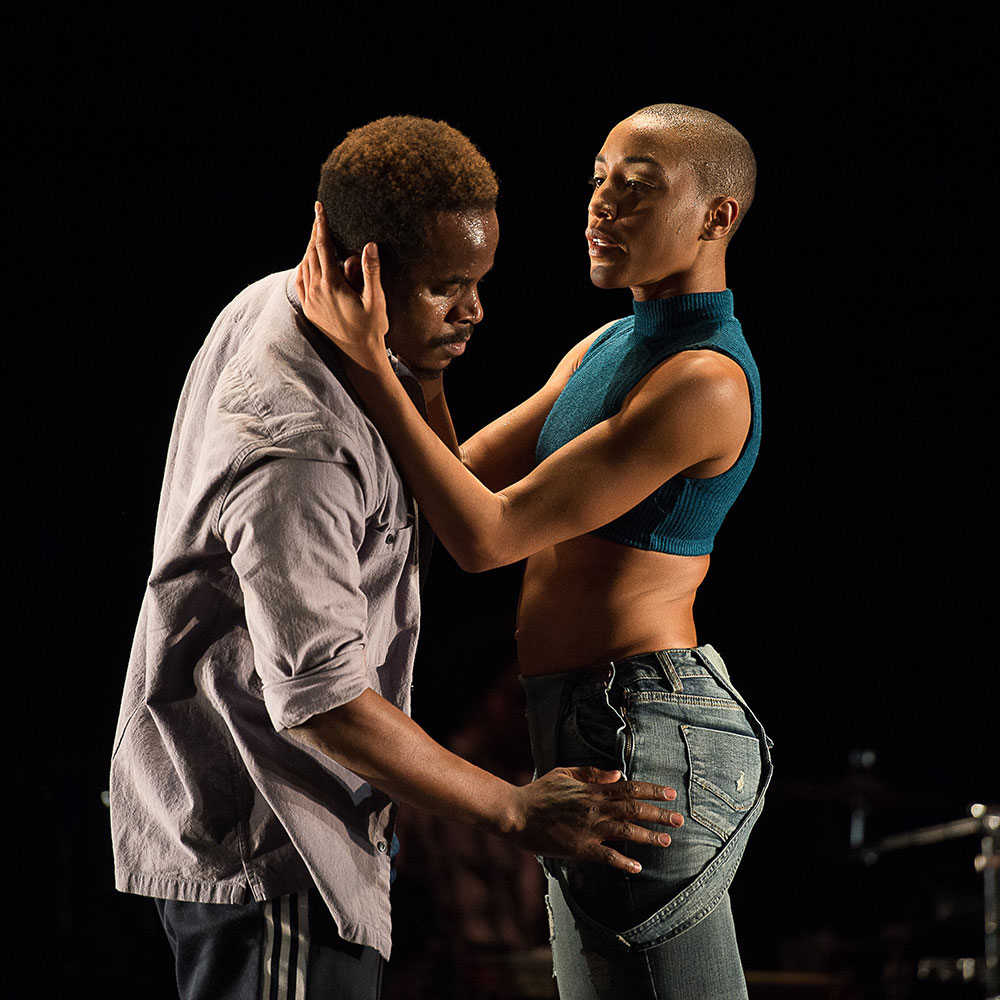
© Christopher Duggan. (Click image for larger version)
Two men (Washington and Timothy Edwards) engage in rough-housing like friends or brothers. They show off for someone, as if standing on a street corner, shooting hoops, jostling, playing. But the scene is interrupted by violence; at one point they fall to the ground, flinching, gasping for air, as if they’d been punched in the gut. A final couple (Juel D. Lane and Beatrice Capote) are accompanied by a violinist (Juliette Jones) who hovers nearby, almost like a guardian angel. The man is in distress; the woman tries to contain his uncontainable energy, which drives him in every direction at once.
When all the dancers join in a semi-circle at the end, with the musicians behind them, it’s a dance party, a fin de fiesta, as in a flamenco show. At that moment the company becomes like a family, each performer holding up the others. During the very earnest “Dialogue” that followed – Brown does one after every show – Brown talked about what drives her to create dances: the desire to tells stories. As she put it: “I put onstage what I want to see and have seen and I believe is out there.” With her rich palette of dance and human gesture, she has the tools with which to do it.












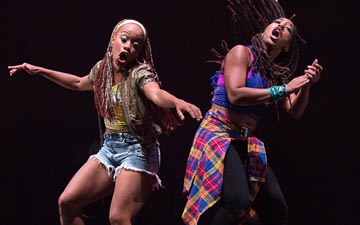
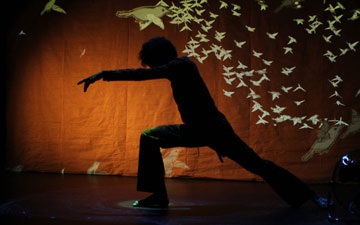
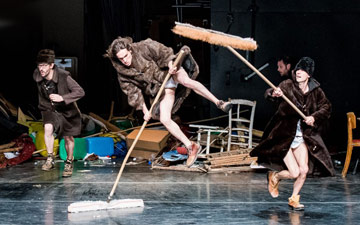

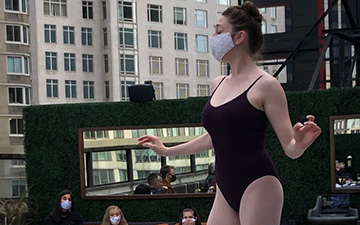
You must be logged in to post a comment.